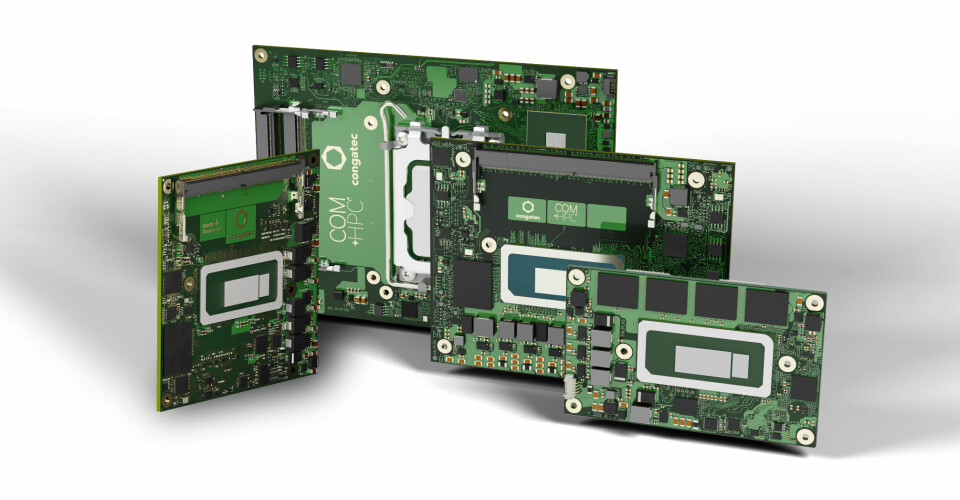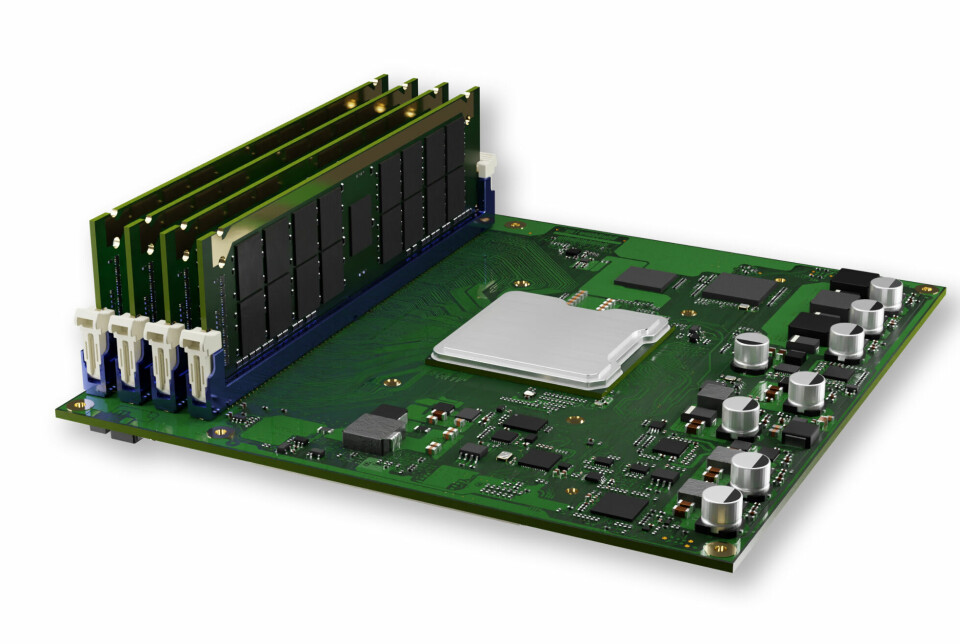Sponset artikkel - Complete COM-HPC ecosystem:

High-performance boost for modular systems
The PICMG created the COM-HPC Computer-on-Module standard with the specific aim to address the performance and bandwidth requirements of the digital transformation. Ranking well above COM Express, COM-HPC provides a highly sustainable long-term basis for all current and future applications. The COM-HPC Mini specification facilitates the migration of existing designs to this new high-performance standard.

BTo start with, it’s important to note that COM Express will
continue to be actively supported with new modules and updates. After all,
there are countless applications that do not require a performance boost above
PCIe Gen 4 and GbE or that need significantly more interfaces than before. So,
only applications that actually require these new features will migrate. After
all, it was the introduction of PCIe Gen 5, among other things, that
necessitated the creation of a new specification that would open the potential
of latest processor technology, such as 13th generation Intel Core processors,
to Computer-on-Modules targeting cost-sensitive applications requiring
long-term design security.
Smaller always fits
The new COM-HPC Mini specification, which is expected to be fully ratified in the first half of 2023, makes migration from existing COM Express designs comparatively easy. Compared to COM Express Compact, COM-HPC Mini has a smaller footprint and a flatter design, yet with 400 high-performance pins offers almost the same number of interfaces via a single connector, whereas COM Express needs two. So, from a mechanical perspective, integrating such modules into existing system designs doesn’t present a challenge. All that needs adapting is the carrier board.
OEM customers looking to design next-generation systems therefore face the question: Should they use 13th generation Intel Core processors on COM Express Compact? In that case, all they need to do is integrate new Computer-on-Modules. Or should they use 13th generation Intel Core processors to leverage all the new features that COM Express doesn’t support in these next-generation systems? Ultimately, and apart from long-term strategy decisions, the question boils down to whether the current performance range will be adequate for the new designs, or whether it’s better to opt for a high-performance upgrade path.
More powerful interfaces
One of the high-performance reasons to opt for COM-HPC is certainly the ability to leverage the 2x higher PCIe Gen 5 bandwidths with 32 gigatransfers per second (GT/s). This makes it possible to use latest GPUs and SSDs in combination with latest processor technology, such as 13th Gen Intel Core processors, for optimum results. Higher bandwidth is immensely important because of the ever-larger AI and high-performance computing datasets, and because loading this data is crucial for the end-to-end performance of applications.
If the systems are massively networked as edge nodes, native on-board support of a second Ethernet interface as well as higher Ethernet bandwidth are also essential. The leap from 1x GbE to up to 2x 10 GbE with TSN and 2x 10 GbE via Serdes offers an immense performance boost for such systems, along with the option to implement line or ring networking instead of star networking.
Another useful feature is the support of up to 4x USB 4.0, 4x USB 3.2 x1 / USB 3.2 x1 + 8x USB 2.0 for numerous extensions or easy Thunderbolt 4 implementation. This allows transmission of power supply, user input, and high-resolution video signals to HMIs via a single cable, or to connect up to five additional devices in series: docking stations, hubs, external PCIe devices, external graphics, and up to two 4k displays. This and numerous other enhancements make COM-HPC the standard of the future. And thanks to COM-HPC Mini, it can now be implemented with relatively little effort since in principle only the carrier board and the cooling solution for the module need to be adapted.
embedded world highlight: COM-HPC Mini
The flagships among congatec’s embedded world presentations are therefore early samples of a COM-HPC Mini design. These first high-performance COM-HPC Mini modules, which will be officially launched after the final ratification of the new specification by the PICMG, are equipped with the new 13th generation Intel Core processors (codenamed Raptor Lake), which set the latest benchmark for the high-end of embedded and edge computing at client level.

Together with the recently introduced high-performance Computer-on-Modules with 13th generation Intel Core processors on COM-HPC Client Size A and Size C, congatec now offers developers the full module bandwidth on COM-HPC for this new processor generation. Thanks to state-of-the-art connectivity, the COM-HPC standard opens new horizons for developers of innovative designs with demands that go beyond what is achievable with COM Express in terms of data throughput, I/O bandwidth, and power density. congatec’s COM Express 3.1 compliant modules with 13th generation Intel Core processors, on the other hand, primarily help to secure investments in existing OEM designs, for instance by providing a path to upgrade data throughput thanks to PCIe Gen 4 support.
Add-on services and training to simplify design-in
But how can OEMs accomplish a COM-HPC implementation quickly? This is where manufacturers like congatec come to the aid of customers with a dedicated training academy, which offers carrier board design courses to provide developers with best-practice knowledge for the design-in. The goal is to give system architects a quick, easy and efficient introduction to the design rules of the new PICMG standard. For that purpose, the training courses guide developers through all mandatory and recommended design basics and best practice schematics for Computer-on-Modules to then be able to start their own carrier board design projects. The focus of the knowledge transfer is on standard-compliant carrier board designs that are essential for building interoperable, scalable and durable custom embedded computing platforms. Operating globally, the academy is offering online and on-site courses and targets developers at OEMs, VARs and system integrators.
Customers who want to use COM-HPC but do not have the resources to integrate the modules themselves, can avail of congatec’s design-in services to handle this for them. Carrier board design, optimized cooling solution design, and even complete system integration services are also available. With this full range of products and services, congatec continues to build on its customer promise: “we simplify the use of embedded technology”.
By providing such an all-round offering – from modules, cooling solutions, application-ready evaluation and application carrier boards, to design-in training and complete design-in services – congatec is creating an extensive COM-HPC ecosystem in which new designs and design sprints for migration from COM Express to COM-HPC Mini are no longer a major challenge.






























